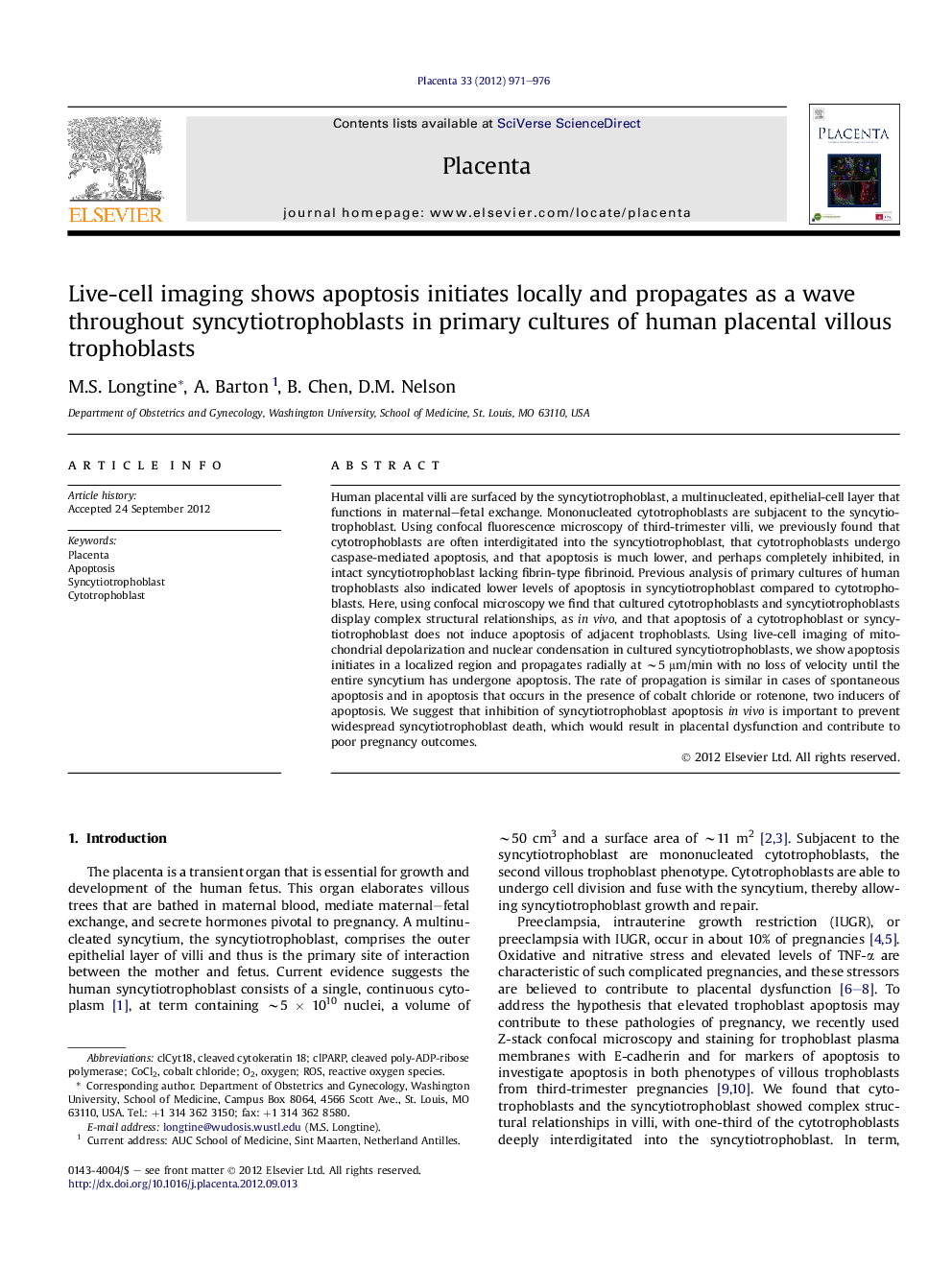| Article ID | Journal | Published Year | Pages | File Type |
|---|---|---|---|---|
| 5895687 | Placenta | 2012 | 6 Pages |
Abstract
Human placental villi are surfaced by the syncytiotrophoblast, a multinucleated, epithelial-cell layer that functions in maternal-fetal exchange. Mononucleated cytotrophoblasts are subjacent to the syncytiotrophoblast. Using confocal fluorescence microscopy of third-trimester villi, we previously found that cytotrophoblasts are often interdigitated into the syncytiotrophoblast, that cytotrophoblasts undergo caspase-mediated apoptosis, and that apoptosis is much lower, and perhaps completely inhibited, in intact syncytiotrophoblast lacking fibrin-type fibrinoid. Previous analysis of primary cultures of human trophoblasts also indicated lower levels of apoptosis in syncytiotrophoblast compared to cytotrophoblasts. Here, using confocal microscopy we find that cultured cytotrophoblasts and syncytiotrophoblasts display complex structural relationships, as in vivo, and that apoptosis of a cytotrophoblast or syncytiotrophoblast does not induce apoptosis of adjacent trophoblasts. Using live-cell imaging of mitochondrial depolarization and nuclear condensation in cultured syncytiotrophoblasts, we show apoptosis initiates in a localized region and propagates radially at â¼5 μm/min with no loss of velocity until the entire syncytium has undergone apoptosis. The rate of propagation is similar in cases of spontaneous apoptosis and in apoptosis that occurs in the presence of cobalt chloride or rotenone, two inducers of apoptosis. We suggest that inhibition of syncytiotrophoblast apoptosis in vivo is important to prevent widespread syncytiotrophoblast death, which would result in placental dysfunction and contribute to poor pregnancy outcomes.
Keywords
Related Topics
Life Sciences
Biochemistry, Genetics and Molecular Biology
Developmental Biology
Authors
M.S. Longtine, A. Barton, B. Chen, D.M. Nelson,
